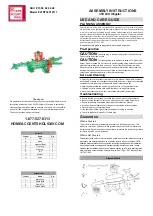
4117047
Rev 2.2
December 18, 2015
32
3. Design Guidelines
3.1. Power-Up Sequence
Apply a LOW level logic to the PWR_ON_N pin (pin 59); within 25ms, VGPIO will appear to be at
1.8V. Either a USB or UART1 interface could be used to send AT commands. Note that for USB
connections, the time when AT commands can be sent will depend on the initialization time used for
the USB connection with the USB host.
Figure 11. PWR_ON_N Sequence with VGPIO Information
Note:
As PWR_ON_N is internally pulled up with 200k
Ω
, a simple open collector or open drain transistor
must be used for ignition.
The PWR_ON_N pin has the minimum assertion time requirement of 25ms, with LOW active. Once
the valid power on trigger is detected, the PWR_ON_N pin status can be left open.
VBATT has to ramp up within 32 ms to reach the value of 3.2V; otherwise, the module may not power
up.
Figure 12. PWR_ON_N Sequence with T
rampup
3.2. Module Switch-Off
AT command
AT+CPOF
enables the user to properly switch the AirPrime HL8518, HL8528 and
HL8529 modules off. The PWR_ON signal must be set to high (inactive) before the
AT+CPOF
command is sent.
Note:
If the PWR_ON signal is active (low level) when the
AT+CPOF
command is sent, the module will
not power off.
If required, the module can be switched off by controlling the power supply. This can be used, for
example, when the system freezes and no reset line is connected to the AirPrime HL8518, HL8528
and HL8529 modules. In this case, the only way to get control over the module back is to switch off
the power line.










































